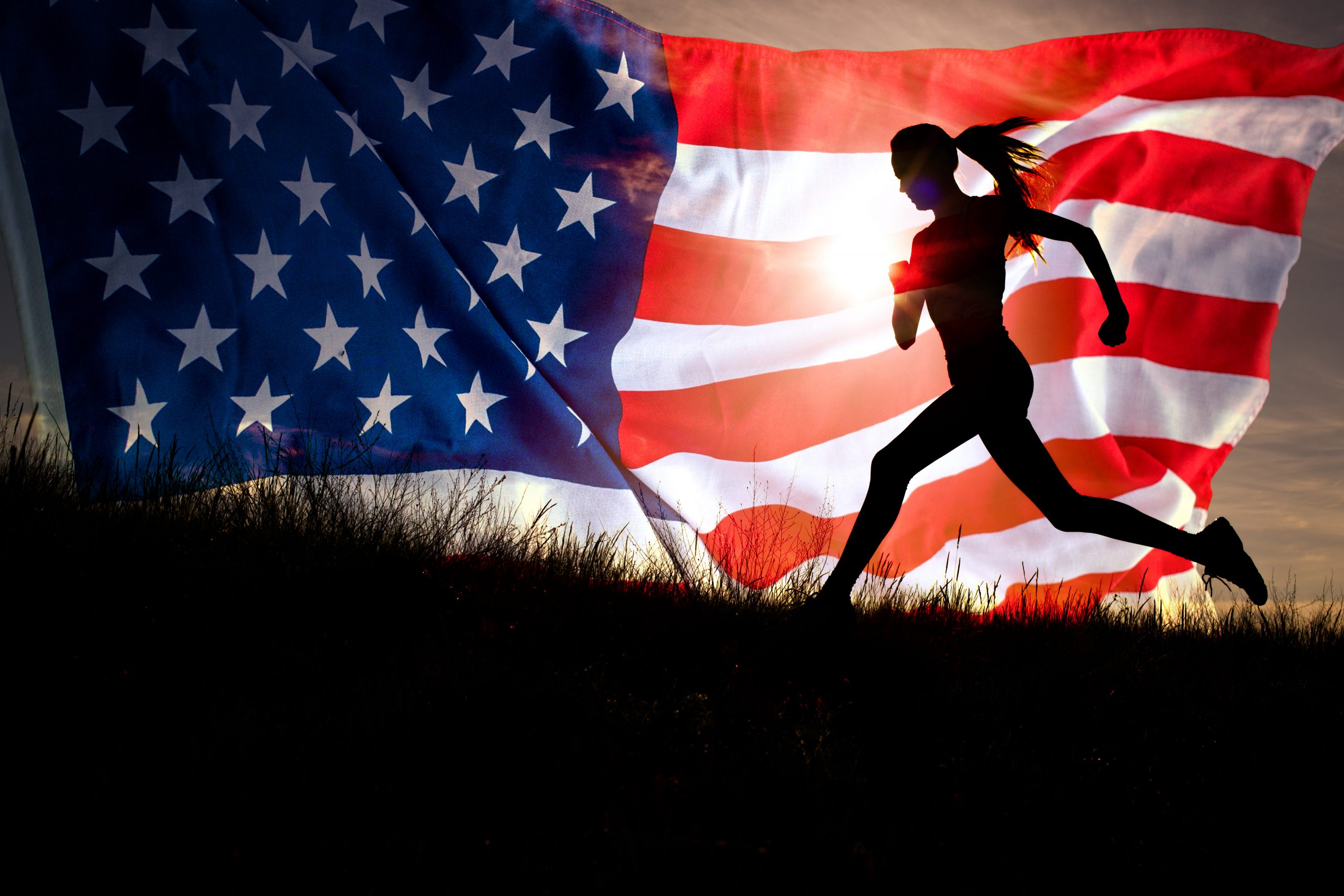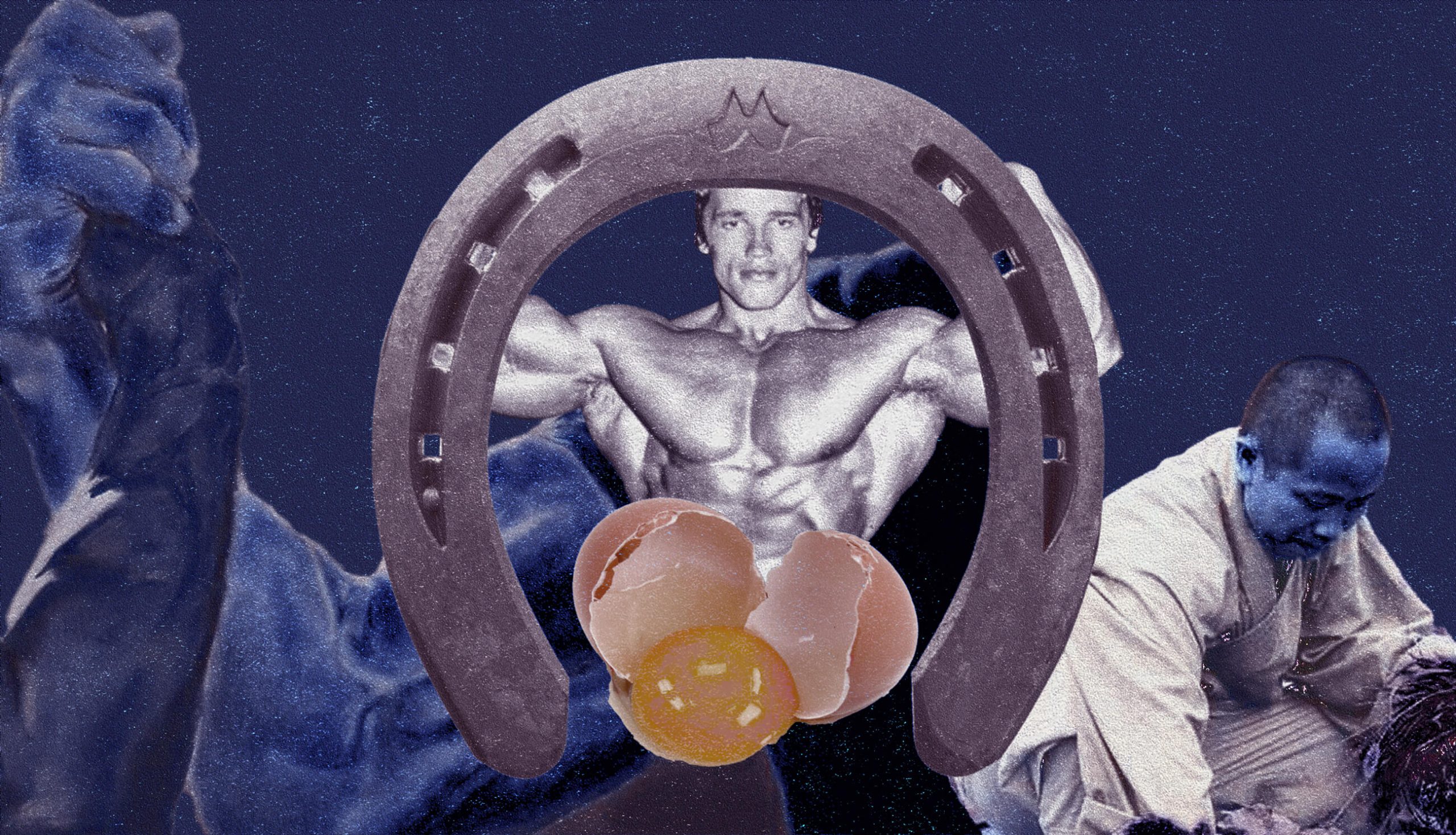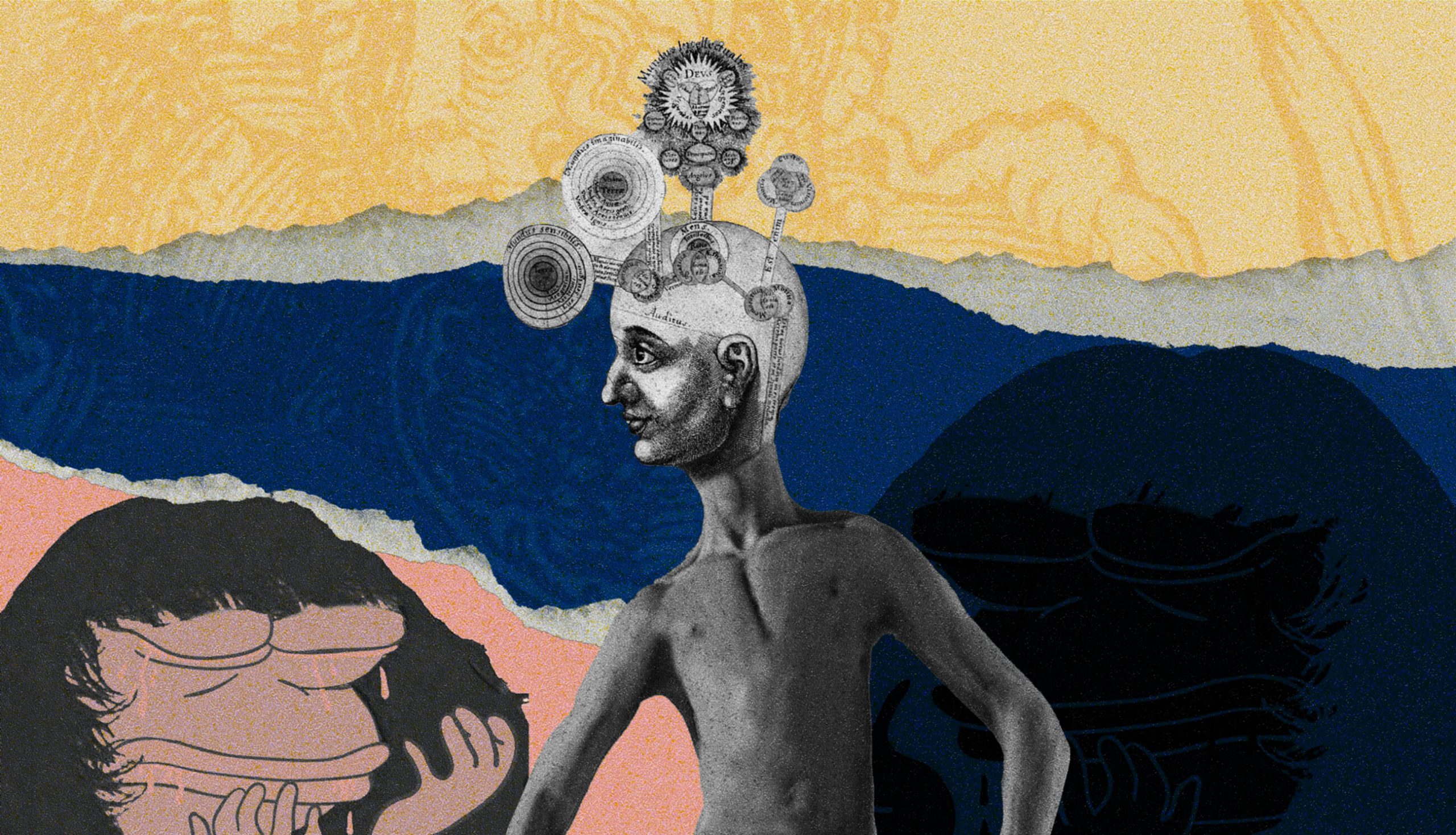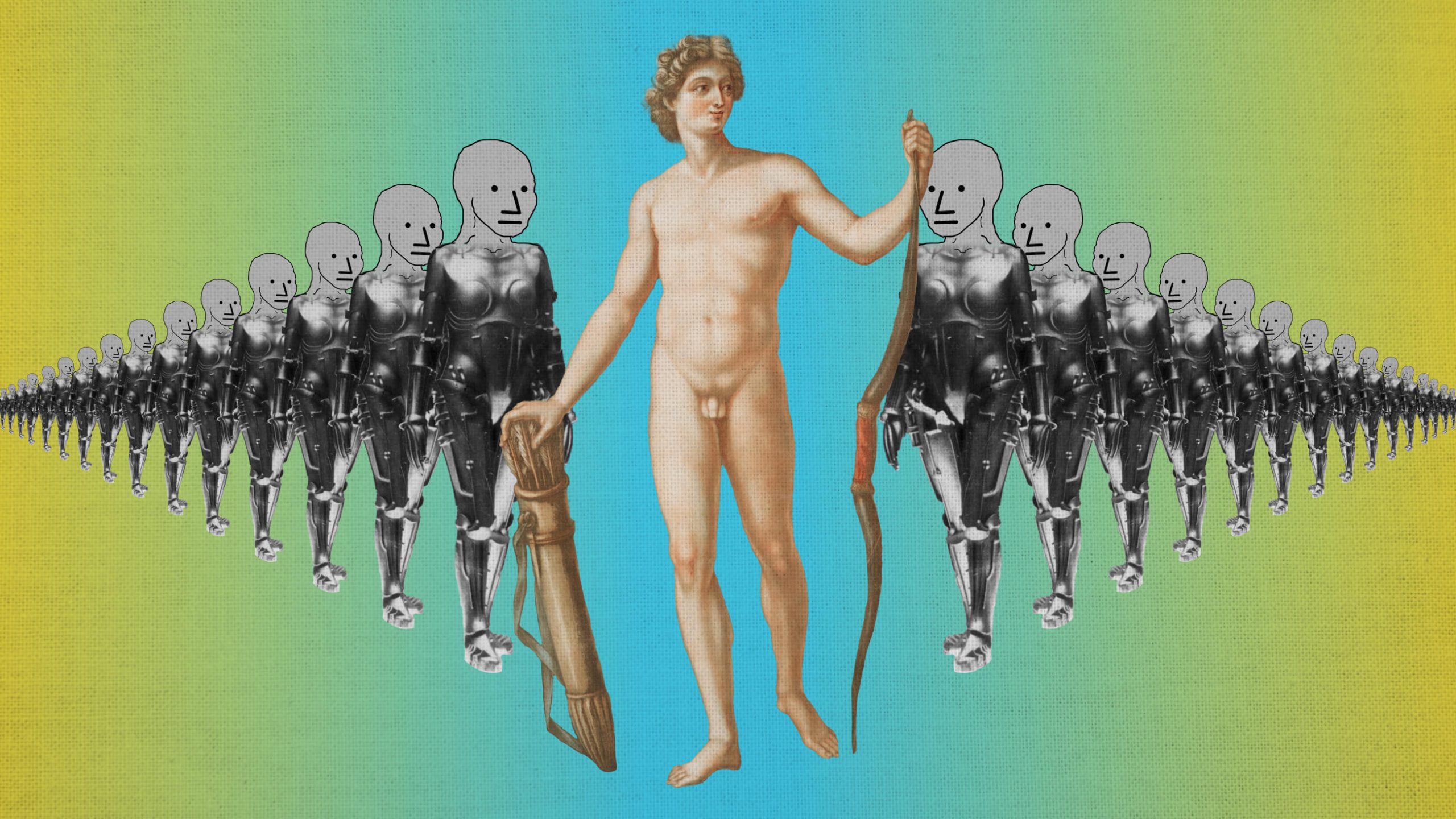The digital era has awoken an ancient revulsion with the flesh.
How to Fix American Physical Culture

What new ways of thinking about the body have in common, and how we can use them for the common good.
“Like archers who have an aim in sight, would we not be more likely to hit upon what we need?”
—Aristotle, Nicomachean Ethics, 1094a2
“With such a tensely strained bow one can now aim at the furthest goals.”
—Nietzsche, Beyond Good and Evil, Preface
After a long decline in how we understand, preserve, and build the body, the arc of American physical culture has reached a nadir—but now it’s on its way back up. Americans sense that the modern concept of the body is truncated and that the contemporary culture of the body is enervated: we sense that there must be a better way.
The standards of contemporary physical culture have fallen far indeed: our government and popular culture constantly assure us that our bodies need serve no purpose beyond survival and whatever low pleasures pass our way. As a recent New York Times column put it: “Remind yourself that your body is enough, that you deserve to take up space and that every body belongs in this world.” In such exhortations one can hear a warped echo of the Declaration of Independence. This enervated parody preserves the proposition that all Americans are equal, but strips that proposition of all of its honor and dignity:
“All bodies are equal and individual, and nothing matters except their preservation.”
But the fact that we need to be reassured of this proposition suggests its truth is not self-evident. Contemporary physical culture has passed its Best By date, and a new understanding of the body is arising that will allow us to reverse the downward arc of American physical culture. To do this, we must come together in thought, deed, and physical community to correct three great errors:
- Today we conceive of the body as one half of a mind-body duality that constitutes an autonomous individual. This means that we think of the body as fundamentally alone, alienated both from other individuals in society and even from the mind. We must recognize that the body exists in constant interplay with the human soul, and that the body is naturally political or communal.
- Today we think of all bodies as equal and defined by aiming at one end: mere survival. We insist that all ends beyond mere survival are arbitrary artifices of the mind. We must learn that the body naturally aims at many different and unequal ends, and that bodies become better and worse insofar as they seek and attain these ends.
- Today we construct public policy on health with a view to making things as easy as possible on our bodies: we must recognize that the overcoming of hardship is a natural purpose of the body, without which it languishes and loses even its most basic capacities.
In the wake of the misery and dissatisfaction caused by modern physical culture, two alternatives are arising in remarkably disparate areas of American political life and society. These two better ways of thinking about the body are very different in their theoretical principles and their philosophic pedigrees, but they offer very similar critiques of modern physical culture, they imply similar practical principles, and they call for many of the same actions to rebuild the American body.
Sun and Steel
The first alternative to the modern perspective on the body is what Japanese author Yukio Mishima called the discipline of “Sun and Steel.” The opening passage of the book of the same name describes what many have experienced as they rebel against modern physical culture:
What I was seeking, in short, was a language of the body.
If my self was my dwelling, then my body resembled an orchard that surrounded it. I could either cultivate that orchard to its capacity or choose to leave it for the weeds to run riot in. I was free to choose, but the freedom was not so obvious as it would seem….
One day, it occurred to me to set about cultivating my orchard for all I was worth. For my purpose, I used sun and steel. Unceasing sunlight and implements fashioned of steel became the chief elements in my husbandry. Little by little, the orchard began to bear fruit, and thoughts of my body came to occupy a large part of my consciousness.
According to the way of Sun and Steel, body and soul are both manifestations of will, and life is the extension of will beyond itself to occupy and define physical space. This teaching, evocative of Nietzsche’s Beyond Good and Evil and The Gay Science, implies the following correction of the modern errors about the body:
- Mind-body dualism is a fiction, for the body profoundly influences the direction and capacity of the mind, and the sickness or weakness of the body leads to perversity of thought. Strength of the will must issue in the development of both the body and the mind. Further, because mind-body dualism is a fiction, the body’s health is radically connected with the health of the surrounding natural and political environment.
- Since all will and life is defined by growing or declining, there can be no such thing as a will to equality per se: the will to equality is always essentially a will toward decline, levelling, and mediocrity. The natural destiny of the body is to aim beyond mere survival toward expansion of its power in diverse directions, especially in the occupation and domination of physical space.
- All will subsists and grows only by struggling to overcome adversity. This struggle is more fundamental than anything—even the distinction between life and death, soul and body, flesh and spirit. Modern efforts to attain health by aiming at health alone are therefore doomed to failure, because they stunt the power of the will and end in sickness. Hardship is essential.
The way of Sun and Steel glorifies physical culture as a training regimen for the will in its effort to define oneself and dominate the external world. This perspective on the body is increasingly in vogue with the new far Right. But for every alt-Right Twitter account fantasizing about handsome Aryan paratroopers, there are a hundred ordinary women and men who sense that modern life has made them weak, soft, sick, and lonely. For these regular folks, too, Sun and Steel has its attraction: they have hopes that the cultivation of the body as an instrument of the will can offer a way out.
Mens Sana in Corpore Sano
The second alternative to the modern view of the body is what the classical satirist Juvenal (cribbing the philosopher Thales) once said should be the object of every man’s prayers: “mens sana in corpore sano,” a healthy mind in a healthy body:
You should pray for a sound mind in a sound body; for a stout heart that has no fear of death, and deems length of days the least of Nature’s gifts; that can endure any kind of toil; that knows neither wrath nor desire, and thinks that the woes and hard labors of Hercules are better than the loves and the banquets and the down cushions of Sardanapalus.
The well-ordered body exists for the sake of a well-ordered soul that scorns the fear of death: this classical ideal of the body is shared by Greek political philosophers from Aristotle to Plato, by Roman rhetors from Marcus Aurelius to Cicero, and by Christian theologians from Augustine to Aquinas.
Mens Sana is distinguished from Sun and Steel by its conviction that there is a sharp distinction between the soul and the body, that the good of this soul consists in the quasi-political rule of its rational element over the passionate and spirited elements of the soul, and that the soul and body as a whole are naturally turned outward towards a hierarchy of natural ends that point toward man’s highest good.
The perspective of Mens Sana in Corpore Sano is very congenial to Christianity as well as classical political ethics. But to adopt this perspective does not necessarily require a particular religious, political, or even moral approach to life: it’s worth noting that Juvenal’s original quote occurs in a context in which the satirist expresses an Epicurean skepticism about whether man can apprehend his highest end.
Recently, Men Sana in Corpore Sano it has seen a muscular resurgence on the American political Right: more and more right-wing writers, pundits, and social media personalities are trading in Chesterton’s tweed for Lululemons and William F. Buckley’s pipe for “pipes” of another sort altogether.
As the new Right crowds into the gym, they’ve had to defend themselves against conservatives who still wear their tweed and smoke their pipes. Tweed Conservatives argue that physical culture is vain, distracts from the care of the mind, and wastes time. One TweedCon tweeted that “[e]ach large muscle of a bodybuilder represents a language he didn’t learn, a poem he didn’t read, a fun fact he never memorized.” The gym bros of the Right have responded to this critique by arguing that a well-trained body is the essential foundation for a well-ordered soul and that the gym is the best antidote to modernity’s neo-Manichean rejection of the body.
Mens Sana in Corpore Sano implies the following critiques of contemporary physical culture:
- The body is for the sake of the soul. Specifically, the order of the body produces order in the passions and in the spirited element of the soul, and this order in turn makes it possible for reason to lead the whole person—soul and body—toward truth and right action. The body naturally aims beyond survival at the excellence of the soul in truth and action. Because the natural ends of the body are not all equal in dignity, bodies are not fundamentally equal, either; bodies are higher in virtue insofar as they make possible the virtues of the soul.
- Because the body is naturally in communion with the soul, the body is naturally communal or political. The ultimate purpose of the cultivation of the body is to attain the virtues of courage and moderation, which virtues achieve their full action only in a political context. At a pragmatic level the primary purpose of the body is to prepare for strong work in times of peace and for sure victory in times of war.
- “Chalepa ta kala”—noble things, says Plato’s Socrates, are difficult, and difficult things are noble. The virtues of courage and moderation are intrinsically concerned with suffering adversity well, and therefore the cultivation of the well-ordered mind and soul demands adversity.
Bending the Bow
The two new perspectives on the body and its proper cultivation are very different: Mens Sana is a classical discipline of the spirit that aims at the harmony of the soul, and Sun and Steel is a post-modern discipline of the flesh that aims at dominance. But for all these differences, both disciplines imply a similar critique of contemporary physical culture and a similar alternative for the future of American physical culture. We may call this alternative Bending the Bow.
Both disciplines of physical culture view the body as a bow:
- Like a bow, the body’s does its proper work only when it aims beyond itself.
- Like a bow, the body assumes its proper form only under tension.
The American body has become weak because we have scorned both these principles. The solution to poor health and the poor understanding of the body that plagues America today is to re-bend the bow of the body, to aim the American body at high ends outside itself and to give it the resistance it needs to achieve its proper form.
What does it mean to bend the bow of the body? It means more than sitting around and thinking and talking about the body—it means using it.
Here are just a few practical projects to re-bend the bow of the American body. These are just few ideas among many, and they run the gamut from public policy proposals to government PR initiatives to private associations, but these projects all have three things in common: they strive to shift the aim of the American body higher, they emphasize communal action rather than technical intervention, and they focus on getting Americans to take a proactive approach to overcoming physical adversity.
American public health expenditures consist mostly of individual-level subsidies for health care (and, more recently, of direct cash payments to everyone). Health expenditures have risen tenfold over the last 50 years, even as rates of diabetes have risen, progress on heart disease has stalled, and obesity has ballooned. State, federal and local governments should invest in communal organizations, businesses, and clubs that produce higher levels of physical activity and health, communal entities that can take public money and multiply its power through their own activity.
If you subsidize a poor man’s health care enough that he can see his primary care physician two more times in a year, what will happen? He will hear that he is overweight, that he should stop eating fast food, that he should get more sleep—twice. Thanks, Doc. But what if you made it easier for that poor man to sign up for an adult soccer league? What if you gave him free food if he came to a community kitchen where participants learned to make healthy meals?
American medical research currently focuses largely on curing the most prevalent and deadly diseases, like COVID, cancer, and diabetes, in those who have already contracted them. Such research is necessary, proper, and laudable. But we need more research into methods for producing higher levels of health and general immune resistance before infection. Develop one COVID vaccine, and you protect America from the COVID variant du jour; develop a drug or a technology to induce higher levels of overall immune strength, and you protect America from the pandemics of the future.
For example, the National Institutes of Health estimates that it will spend $2.3 billion on cardiovascular disease research in 2021, and CVD research expenditures have been roughly flat since 2008. Is there another way to make American hearts healthier, one that offers a higher return on investment? Studies have shown that high testosterone levels are associated with a much lower incidence of cardiovascular deaths as well as all-cause mortality among men, and higher estradiol levels may afford women some protection against cardiovascular disease as well, although this association is slightly more complicated.
The NIH currently spends $236 million on researching estrogen (about a tenth of what it spends on CVD); it does not even have a formal category for testosterone research. This is just one example of how investing more medical research in building health as opposed to fixing disease could improve the overall health of the American body.
American schools used to honor physical fitness. Boomers may not have walked both ways uphill to school through the snow every summer, but they did have the advantage of living in the days when John F. Kennedy spent real effort publicizing the Presidential Fitness Challenge. The most famously successful response to that challenge was the PE program put in place at La Sierra High School in Carmichael, CA. This program gave every high school student the opportunity to train like a varsity athlete, with a rigorous program of calisthenic exercises and prizes and honors for different levels of progress. The results were swift and transformative, and the program was widely copied across the nation. The Department of Education, state legislatures, local school boards, and local parent organizations should join forces to create a new American Fitness Challenge and a new La Sierra Program for the 2020s.
Government rhetoric currently focuses on the fear of death and disease as its main rhetorical tool to improve American health: eat less fat or you will get heart disease; exercise moderately (but not too much) or you will get diabetes. Today, the public health rhetoric of fear takes the form of mask mandates, daily pandemic briefings, and digital dashboards of COVID death that deliver a quick fix of anxiety at the touch of a thumb.
All of this rhetoric really makes a big impression on the American psyche. Americans may be cynical and distrustful of Congress, but they trust state governments much more, and surveys consistently show that we place a lot of trust in local county and city officials. Our response to COVID mandates, quarantines, and lockdowns is the greatest and most recent proof of our level of trust: even though county executive officials universally lacked constitutional authority to compel citizens to shelter in place, wear masks, and socially distance, compliance with their orders was almost equally universal.
Local officials could use their rhetorical power for good. They could work with local health administrators to set ambitious goals for physical health and fitness for adults in their jurisdictions. Local officials could create an Adult American Fitness Challenge. This would require little or no expenditure of public funds: all county and state officials would have to do is set public goals for health, physical fitness, and feats of athletic excellence for adult citizens. They could challenge all adults to meet the Army Physical Fitness test standards for their age group; they could offer a prize for the city that fields the most men and women capable of running a sub-10 minute mile; they could organize school rivalries between high schools, where parents get to compete alongside their kids.
An Adult American Fitness Challenge would require almost no funding. Press releases and earned media to honor individual citizens and communities that meet or exceed those goals. Government entities could partner with local gyms, existing YMCA or public recreation facilities, or existing athletic clubs and organized race organizations to earn media and raise awareness at little to no cost. Local news media would love covering the races, calisthenic competitions, and games; they would love the wonkish public health angle; and slowly but surely, adult Americans’ motivation for pursuing health would shift from fear to honor.
The American Mind presents a range of perspectives. Views are writers’ own and do not necessarily represent those of The Claremont Institute.
The American Mind is a publication of the Claremont Institute, a non-profit 501(c)(3) organization, dedicated to restoring the principles of the American Founding to their rightful, preeminent authority in our national life. Interested in supporting our work? Gifts to the Claremont Institute are tax-deductible.
To stay free, you must learn to be courageous.
Antagonism to Big Health is making unlikely allies of crunchy moms and right-wing trads.
Your mind is not the only thing you are.
Our humanity must reassert itself over our technological power.





